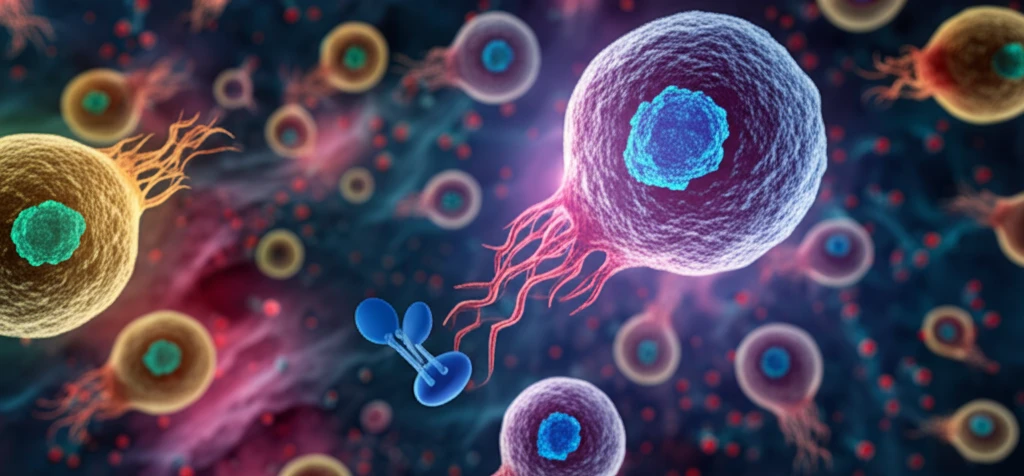
Decoding Breast Cancer: How Progesterone Receptor Expression Can Guide Treatment
"New research highlights how analyzing progesterone receptor expression in proliferating cancer cells could refine treatment strategies for hormone-receptor-positive breast cancer and improve patient outcomes."
Breast cancer is a complex and heterogeneous disease, with various classification systems based on gene expression, genetic status, and other factors. Clinically, it's often categorized into subtypes based on hormone receptor (HR) status, human epidermal growth factor receptor 2 (HER2) status, and proliferation markers such as the Ki67 labeling index (LI). For estrogen receptor (ER)-positive breast cancers, proliferation markers play a crucial role in biological classification and treatment selection.
Among these markers, progesterone receptor (PgR) has been identified as a potential factor in determining which HR-positive breast cancer patients would benefit most from chemotherapy. Studies suggest that PgR expression can have a prognostic effect on ER-positive breast cancers. However, the clinical utility of PgR is still being explored to its full potential. Recent research suggests that breast cancer may have at least two distinct driving mechanisms for proliferation: the hormone receptor (HR) pathway and the growth factor receptor pathway.
A recent study published in Tumor Biology investigated how these different driving systems might produce distinct expression patterns of estrogen-regulated genes, such as PgR, in proliferating cells. This article breaks down the key findings of this research and their implications for future breast cancer treatment strategies.
PgR Expression: A New Perspective on Breast Cancer Proliferation

The study, led by Takayuki Ueno and colleagues, hypothesized that different driving systems in breast cancer—hormone receptor pathways and growth factor receptor pathways—lead to different expression patterns of estrogen-regulated genes, including progesterone receptor (PgR). To investigate this, the researchers assessed PgR and Ki67 expression (a proliferation marker) using dual-fluorescence immunohistochemistry in ER-positive breast cancer tissues.
- Training Cohort Findings: In the initial training cohort, the presence of PgR-positive proliferating cells was associated with lower histological grade and better disease-free survival (DFS).
- Validation Cohort Confirmation: These findings were confirmed in a validation cohort from the neoadjuvant endocrine trial JFMC34. Patients with PgR-positive proliferating cells showed a better response to endocrine therapy and had a lower Oncotype DX Recurrence Score.
- Multivariate Analysis: Importantly, multivariate analysis revealed that the PgR status of proliferating cells, rather than overall PgR or Ki67 expression alone, was an independent predictor of disease-free survival in both cohorts.
Implications and Future Directions
This research provides valuable insights into the complexities of breast cancer proliferation and the role of progesterone receptor expression. By demonstrating that the PgR status of proliferating cells is an independent prognostic factor, this study opens new avenues for personalized treatment strategies in ER-positive breast cancer. Further research is needed to validate these findings and explore how this classification can predict response to specific therapies, such as chemotherapy, ultimately improving outcomes for patients with luminal-type breast cancers.
